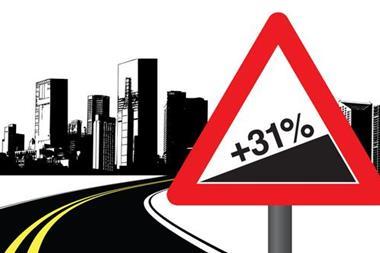The D&O market has served both buyers and sellers of policies well in recent years, but in a new era of brutal cutbacks and unforgiving regulatory regimes, have those golden days come to an end?
The business world has had its fair share of headlines in recent years. That in turn has put the people at the top under closer scrutiny and made the operating environment for directors and officers more onerous.
The number of corporate disasters and claims of negligence or incompetence against company directors has risen steeply since 2008. Many institutions have been the subject of litigation, both from investors and shareholders.
The cost of proceedings is skyrocketing in line with legal expenses. Meanwhile, regulators are taking a more aggressive attitude to ensuring companies and directors act within the law.
Added to this, companies looking to cut costs have been making large-scale redundancies. But staff, increasingly aware of their employment rights and facing long-term unemployment, are more prepared to seek financial recourse against their previous employers and directors.
Bearing all this in mind, how is it that prices in the directors’ and officers’ (D&O) insurance market remain, for the most part, low, with ample capacity for even the largest commercial risk?
The answer is that the much-hyped tsunami of claims in the wake of the financial crisis has not materialised. While the insurance market has experienced a surge in activity, it is yet to harden significantly outside of the financial services sector.
Insurers still see D&O as a good risk. And as a result, the D&O insurance market remains competitive, with plenty of insurers displaying their wares. Buyers at financial institutions have even enjoyed some softening of their terms and conditions over the past six months.
“Most insurers still deem D&O a profitable sector and this is evidenced by new entrants to the market, along with an increased focus on resource and capacity from incumbent insurers,” says Mark Burden, director of financial and professional risks for Heath Lambert.
Marsh D&O liability broker Chris Newell goes further: “The market in commercial D&O remains extremely soft. There’s a fairly acute case of overcapacity. In London we have access to in excess of £525m capacity; in Europe there’s roughly the same in euro equivalent. There is more than enough capacity to accommodate every commercial risk that I’ve seen in the past three years.”
European competition
Frederic Boles, a colleague of Newell’s at Marsh, adds: “At the moment, the D&O market remains competitive for European companies. Capacity is available to cater for most firms’ requirements, as the majority of carriers are looking at grow their portfolio.”
Insureds continue to enjoy the prospect of keenly priced premiums and improving terms and conditions.
So far, says Chartis vice-president of financial lines David Walters, the claims environment has done little to dent enthusiasm for business, and he cannot foresee any major change to this. Penetration of D&O cover is climbing, with businesses increasingly aware that protecting senior staff is affordable.
Burden, however, does not consider the situation sustainable. While there’s no sign of insurers pulling away from the market at present, the expectation is that the current crop of more than 35 D&O insurers cannot continue to occupy the same space.
“Mergers or withdrawals from some quarters are inevitable,” he says.
As yet, neither the financial crisis nor the ensuing recession have given rise to the kind of severity and frequency of claims that could be expected to force a brutal hardening of the D&O market. That has led to accusations that certain sections of the market exploited the crisis to try and talk up rates.
“We’ve not seen a flood of claims,” Newell confirms. “On the surface, it hasn’t panned out as many commentators were predicting. With the benefit of hindsight, perhaps it was an overestimation to talk about a flood of claims after the crisis.”
Artificial circumstances
However, the whole situation could be considered artificial, Newell says. The torrent of rescue packages that governments around the world rolled out in the depths of the economic crisis have helped to significantly soften the blow.
“It’s difficult to say how much bigger D&O claims would have been in the absence of the fiscal support that we’ve seen from central banks around the world,” he adds.
So what does the future hold? Newell believes there’s a real risk of hidden monsters emerging as government support packages are withdrawn and austerity drives start to kick in.
As governments pull back their support and cut contracts with the private sector, some companies could be forced under. If it turns out to be the case that cuts were undertaken too soon – before the recovery was fully off the ground – the private sector could be further hit.
Newell believes all this could create uncertainty among businesses. And when shareholders lose out because profit targets aren’t met, a rise in D&O claims becomes more likely.
He also points to a possible fresh dip in the European Economic Area, which could result in a rise in commercial D&O claims.
As a result, directors should focus on being as transparent and compliant as possible. Newell warns: “The need for timely communication and disclosure to shareholders and regulators has never been more important.” IT
Nathan Skinner is editor of Insurance Times sister title, StrategicRISK. Additional reporting by Liz Booth
Long arm of the law
New legislation is adding to pressure on D&O cover. The Corporate Manslaughter Act has been in force since 2008 and the first cases are under way.
Lawyers at Herbert Smith warn: "Individuals within a corporate entity can be prosecuted for manslaughter contrary to common law."
They say that the conviction of Sussex fireworks company owner Martin Winter "provides a recent example of the type of conduct that constitutes gross negligence leading to convictions for manslaughter".
Meanwhile, the latest Companies Act increases the responsibility and liability of directors, while the new Bribery Act is also expected to have an effect. The greatest fear is that UK authorities may start waging war on companies in a bid to clean up business. Barlow Lyde & Gilbert partner Roderic McLauchlan says: "The UK is playing catch-up on the crusade against corruption the USA has waged."
He worries about the long reach of the new Bribery Act, under which any company with overseas interests is expected to ensure its practices worldwide conform to the UK standard.
Any company with overseas interests is a potential target of the authorities, and McLauchlan fears this will lead to more tension between a company and its directors. No wonder that, as Chartis vice-president of financial lines David Walters reveals, limits for cover are rising.
"There was a time when companies would not pay for more than £1m of cover; the average cover is now £5m," he says. "For those with US exposure, it is much higher - we see limits of around £100m."
Hosted by comedian and actor Tom Allen, 34 Gold, 23 Silver and 22 Bronze awards were handed out across an amazing 34 categories recognising brilliance and innovation right across the breadth of UK general insurance.













































No comments yet